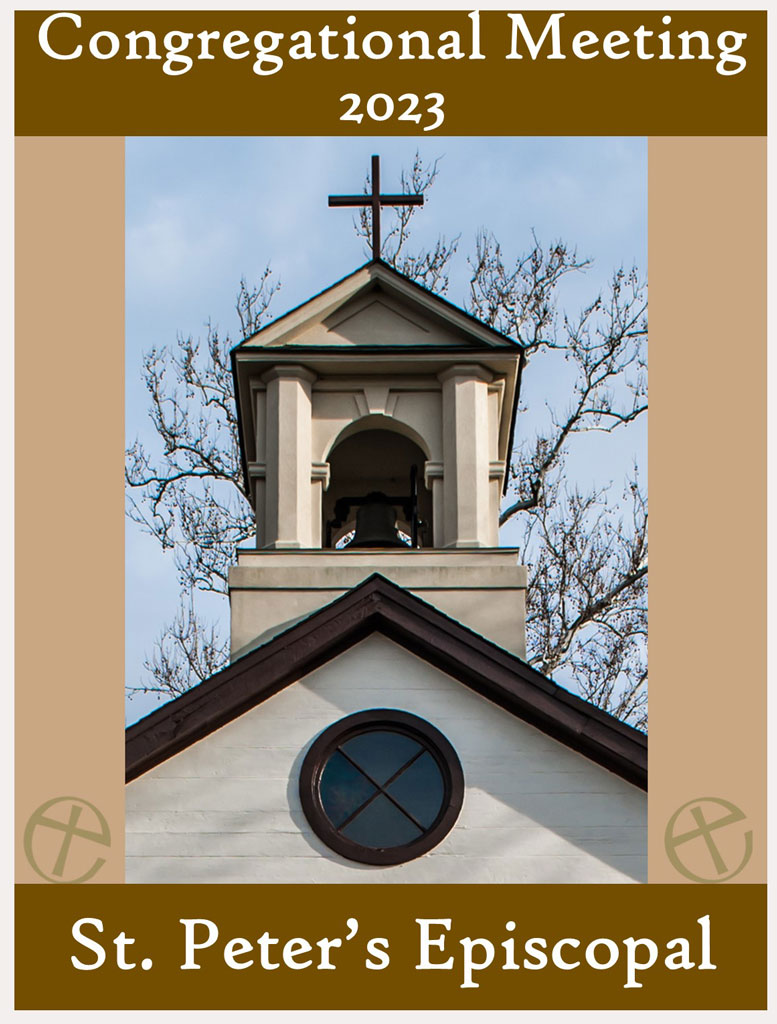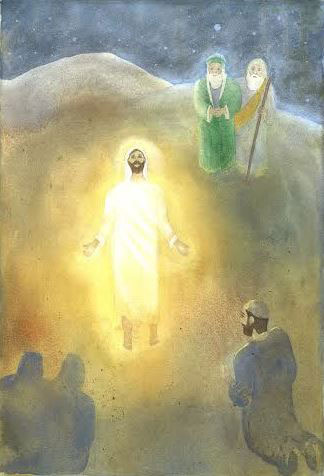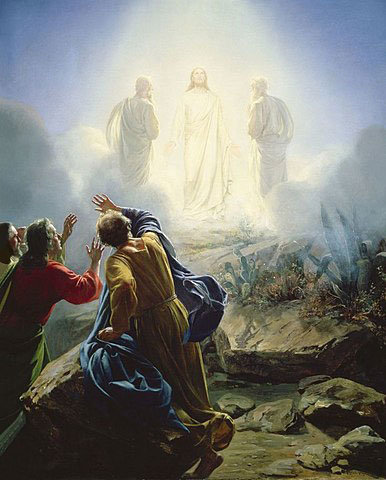I.Theme – The Promise : God’s Glory and its revelation in the Transfiguration

“Transfiguration (detail) “ – Rafael (1516-1520)
The lectionary readings are here or individually:
Exodus 24:12-18
Psalm 2 Page 586, BCP
Psalm 99 Page 728, BCP
2 Peter 1:16-21
Matthew 17:1-9
God’s glory is explored in two mountain top scenes in the Old Testament and Gospel stories. The example of the transfiguration is itself transformed into hope for a future king. The promise.
The psalms talk about kingship and particularly the ideal future king. There is praise of God as King who has helped people in need, given them just laws punished and forgiven them where appropriate.
1st Peter, the New Testament reading, looks back to the Transfiguration and forward to Christ coming again in all his glory. The emphasis is on the future – Here the transfiguration becomes a sign of hope for the future that God’s purpose will prevail and be fulfilled… through God’s goodness in Christ.
The Gospel is an appropriate conclusion to Epiphany. We began this season with Jesus’ Baptism and conclude with the Transfiguration. In both cases, God (“voice”) proclaims “This is my Son, the Beloved…”. In both points the heavens and the earth intersect. As he has just predicted his own suffering and death (Mt 17:21-23), now God previews his post-resurrection glory. Also, Matthew 16:28 had just reported Jesus’ role as judge to come, who would judge all according to their performance, a theme also in the context of the baptism in Matthew.
This story is reccounted in not only Matthew but also in Mark and Luke. Only Matthew includes “in whom I am well-pleased,” which exactly repeats the words at Jesus’ baptism (3:17). This connection wouldn’t have been made by the disciples, since they weren’t present at the baptism, but it is a connection the readers to make. Why is God pleased with Jesus? At his baptism, it may come from Jesus desire “to fulfill all righteousness” (3:15). At the transfiguration, the “righteousness” is more clearly defined by Jesus’ first passion prediction. Doing what God requires (righteousness) is more important than Jesus’ own life.
In the Transfiguration, Peter, James and John witness Jesus’ clothes and garment shining like the sun. An argument can be made that this is also Peter’s transformation. David Lose writes “On the mountain Peter’s transformation begins…” “Peter’s transfiguration begins — when we fails, falls, and is lifted up again and realizes that above and beyond everything else, he is called to listen to Jesus.” That’s much like us,
Peter has a problem in getting it right. He misunderstood Jesus first passion prediction in Matthew 16:21. Peter rebukes Jesus for saying such words. Peter’s problem, as Jesus indicates it, “You are setting your mind not on divine things but on human things” (16:23b). In the Garden of Gethsemene Jesus tells them to stay awake and pray, but they fall asleep three times.
We are like Peter in many ways. We don’t get it right- we are afraid. For us the key to the transfiguration for us may also be when God says “listen to him (Jesus). ” We may not listen either. “Get up and do not be afraid.”
As Lose writes, “We, too, of course, try our best, sometimes succeeding and sometimes coming up short. We, too, have moments of insight and moments of denial. We, too, fall down in fear and are raised up again to go forth in confidence. We, too, that is, are called to listen, called to discern God’s way in the world, called to partner with God and in this way be transformed.”
II. Summary
Old Testament – Exodus 24:12-18
Earlier in Exodus 22:22-23:33, Moses has ascended Mount Sinai to receive the Law verbally from God – both the Ten Commandments (“words”, v. 3) and the case law (“ordinances”)
In v. 3, Moses has told them to the people; they have agreed to their side of the Covenant. (God’s side is to be their god and to protect them.) Moses has then written down all God has told him. The pact, the union between God and the people, has been ratified in blood, “the blood of the covenant” (v. 8). Blood has been dashed against the altar (symbolizing God) and sprinkled on the people. (Vv. 9-11 are from another oral tradition, so we skip to v. 12).
Now God offers to put all the laws in permanent form, on “tablets of stone”. So important is Moses’ ascent of the mountain that it is mentioned four times in vv. 12-18. Moses leaves “the elders” (v. 14) in charge and commissions “Aaron and Hur” to administer justice in his absence. God’s “glory” (vv. 16, 17) is an envelope of light, a bright “cloud”, veiling his being: the people can see the cloud, but not God. Unlike the light from the Burning Bush (Chapter 3), this appearance of God is frightening “like a devouring fire” (v. 17). Moses prepares to meet God for some time (“six days”, v. 16).
After a period of preparation, Moses is called deeper into God’s presence where he remains for 40 days and forty nights. This could be a reminder that humankind must be prepared to reflect patiently in the mystery of God before we are able to recognise or ‘see’ God and that working out God’s purpose takes time and deep reflection. “Forty days and forty nights” (v. 18) is reminiscent of the Flood, of the time the Israelites scouted out Canaan’s defences before entering the Promised Land, and of Elijah’s later experience on the same mountain. It is a considerable length of time.
This passage brings to us a description of God’s glory in human language, the cloud for the place of mystery and preparation and the fire for the divine presence and glory. The language is dramatic and yet meant to affirm that God’s divine presence, often beyond human explanation, is part of our experience. It is given, not for us to take as a prompt to seek clouds and fire on mountains but, to encourage us that God is incarnate in our world and in the process of working out His purpose for us and with us.
Psalm 2
This psalm was probably written for the coronation of a king of Judah. It speaks of our inability, or even refusal, to allow God’s divine right of rule in our lives and in our relationships, with one another and between nations. Political rebellion against the Lord’s representative (“his anointed”, v. 2) is tantamount to revolt against God himself. Vv. 4-6 are God’s reaction from heaven. He has chosen “my king” and established him in his dwelling place on earth, “Zion”, Jerusalem. The new king (“I”, v. 7) recites his formula of adoption as God’s son; he then (vv. 10-12) warns other kings to submit – or face the consequences!
In v. 2, “anointed” is messiah in the Hebrew. A title of an Israelite king, after the demise of the monarchy it became the name of the ideal future king who would restore Israel to glory. In Acts, Peter, John and others apply this title to Jesus, and Paul speaks of the risen Christ as God’s son.
Psalm 99
This is a hymn of praise to God as king. The endings of Vv. 3, 5 and 9 are perhaps a refrain, said or sung by worshippers as they “extol” (v. 9) God. God, on his throne above the “cherubim” (v. 1, the half-human, half-animal creatures thought to hover above the altar) in the Temple, is to be praised by “all the peoples” (v. 2). V. 4 lists some qualities God has shown “Jacob”, the people of Israel. (His “footstool”, v. 5, is the Ark).
For Israel, God has also:
1 helped people in need (vv. 6, 8);
2 given them just laws (v. 7); and
3 punished and forgiven them where appropriate (v. 8).
“Moses … Aaron” (v. 6) and “Samuel” were known for communicating with God, and were his representatives. “His holy mountain” (v. 9) is Mount Zion, the hill on which Jerusalem stands.
New Testament – 2 Peter 1:16-21
Here we have the church’s proclamation of Christ as the true king sent by God to be the savior of the world, the fulfilment and completion of all things.
The author has written that God, ultimate “goodness” (v. 3), “who called us”, has given us everything we need for eternal life. What Jesus promised to us is our means of escaping the “corruption” (v. 4) of this world and of attaining union with God. So, he says, our faith and knowledge of Christ should result in ethical living, “mutual affection” (v. 7) and love. If we have these qualities and if they grow in us, they will save us from being ineffectual and “unfruitful” (v. 8) in doing Christ’s work. If we don’t have them, we are “nearsighted and blind” (v. 9) and have forgotten the release from sin we obtained in baptism. So be steadfast in the faith; being thus will gain us entry into Christ’s kingdom (v. 11). This letter is written as Peter’s last testament as he approaches death, instructions he leaves to remind his readers of how to remember to be faithful. (vv. 12-15).
The passage looks back to the transfiguration and forward to Christ coming again in all his glory. While the disciples were “”eyewitnesses”, the author of 2 Peter refers to it [the transfiguration] as something that is heard… “He received honor and glory when that voice was conveyed to him… We ourselves heard this voice come from heaven”.
And so for the Christian the journey of faith into the fulfilment of God’s purpose for the humanity and the world comes about through seeing God in the world and in Christ Jesus the Living Word. Here the transfiguration becomes a sign of hope for the future that God’s purpose will prevail and be fulfilled… through God’s goodness in Christ. It showed the power of God and was a preview of Christ’s second “coming”
Gospel- Matthew 17:1-9
The Season of Epiphany begins (Jesus’ Baptism) and ends (Jesus’ Transfiguration) with a heavenly voice making Jesus known to the world. (epiphany = “to make known”).
In the preceding chapter Peter has confessed his faith in Jesus as the Messiah, the Son of God (16:16) and Jesus has offered some sober teaching about the cost of following him.
Then he goes up on a Mountain. Jesus selects Peter, James, and John to accompany him. Although unnamed and unstated (though probably Mt. Tabor) , a “high mountain” is a “thin place,” a place that is close to the spiritual realm, a place for sacred encounters.
Before their eyes, Jesus’ clothes and garment shine like the sun.
He experiences the presence of Moses and Elijah, two peerless prophets who had shaped the Hebrews’ view of what Messiah would be like when he came. Elijah and Moses represent the Prophets and the Law. Their talking with Jesus would signify the high spiritual status of Jesus. Because Elijah was lifted up into the heavens before his physical death, he is still looked to by Jews today as a fore-runner of the Messiah.
As he has just predicted his own suffering and death (Mt 17:21-23), now God previews his glory with the resurrection.
Peter begins babbling about setting up permanent dwellings for the heavenly visitors, to prolong the glorious experience. As at Jesus’ baptism in Matthew 3:17, the disciples now hear a voice from heaven saying “This is my Son, the Beloved; with him I am well pleased; listen to him!” Then it is time to come down the mountain and heal and teach and suffer.
The voice from the cloud would be understood to be the direct voice of God speaking. Just as in Luke 5:8, where Peter falls down and urges Jesus to “Go away from me Lord, for I am a sinful man,” so too here the disciples are deeply aware of their mortal unworthiness to be so much as even hearing God’s own voice. Thus they fall to the ground – as an act of humility; and are afraid – because they are unworthy to be in the presence of One so much more exalted than they.
The word, “transfigured,” is very important. It comes from a familiar Greek word that is known to us: “metamorphosis.” It means to completely change or transform such as a cocoon transforms into a butterfly or a tulip bulb transforms into a glorious tulip blossom. Jesus’ body was transformed from an earthly body into a heavenly body, from a human body into a resurrection body. It is the teaching of the Bible that our bodies, too, shall be transformed in heaven and that our heavenly bodies will be glorious (I Corinthians 15, the Apostle Paul).
III. Articles for this week in WorkingPreacher:
Old Testament – Exodus 24:12-18
Psalm – Psalm 2
Psalm – Psalm 99
Epistle – 1 2 Peter 1:16-21
Gospel – Matthew 5:38-48










